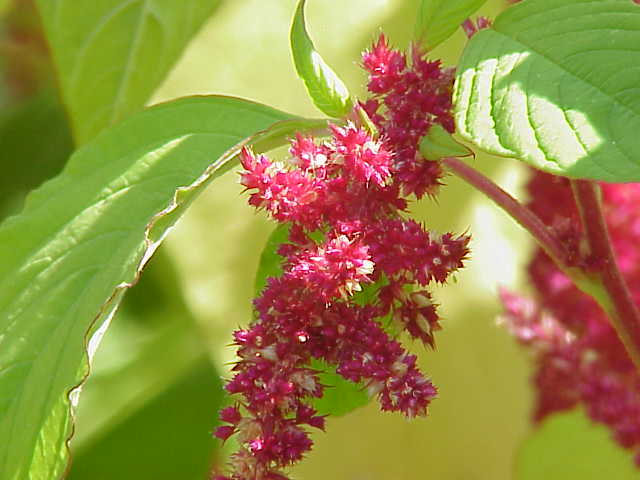Difference between revisions of "AY Honors/Edible Wild Plants/Amaranth/es"
(Created page with "EWP/es | name = Amaranto | image = Amaranthus tricolor0.jpg | description = Amaranto es un género cosmopolita de plantas perennes anuales o de corta duración. Cimas que pare...") |
(Created page with "Aunque varias especies muchas veces se consideran como malas hierbas, gente por todo el mundo valoran a los amarantos como verduras de hoja y cereales. | range = Por todo el m...") |
||
| Line 8: | Line 8: | ||
| description = Amaranto es un género cosmopolita de plantas perennes anuales o de corta duración. Cimas que parecen como amento de flores densas crecen en verano u otoño. Aproximadamente 60 especies se reconocen, con inflorescencias y follaje que van desde púrpura y rojo a verde o dorado. | | description = Amaranto es un género cosmopolita de plantas perennes anuales o de corta duración. Cimas que parecen como amento de flores densas crecen en verano u otoño. Aproximadamente 60 especies se reconocen, con inflorescencias y follaje que van desde púrpura y rojo a verde o dorado. | ||
| − | + | Aunque varias especies muchas veces se consideran como malas hierbas, gente por todo el mundo valoran a los amarantos como verduras de hoja y cereales. | |
| − | | range = | + | | range = Por todo el mundo en las zonas templadas y tropicales |
| − | | seasons = | + | | seasons = Verano, Otoño |
| − | | use = | + | | use = Las especies de amaranto se cultivan y consumen como hortaliza de hoja en muchas partes del mundo. Las semillas pueden ser recogidas y usadas como un grano (o en forma de harina). |
To maximise seed harvest, shake the near-mature seed heads into a paper bag or onto a canvas. If the growing area is large, it is faster to cut the heads all at once when most of the seeds are ripe. The fully ripened heads tend to drop their seeds. | To maximise seed harvest, shake the near-mature seed heads into a paper bag or onto a canvas. If the growing area is large, it is faster to cut the heads all at once when most of the seeds are ripe. The fully ripened heads tend to drop their seeds. | ||
Revision as of 14:29, 1 June 2015
Amaranto
Descripción: Amaranto es un género cosmopolita de plantas perennes anuales o de corta duración. Cimas que parecen como amento de flores densas crecen en verano u otoño. Aproximadamente 60 especies se reconocen, con inflorescencias y follaje que van desde púrpura y rojo a verde o dorado. Aunque varias especies muchas veces se consideran como malas hierbas, gente por todo el mundo valoran a los amarantos como verduras de hoja y cereales.
Dónde se encuentra: Por todo el mundo en las zonas templadas y tropicales
Disponibilidad: Verano, Otoño
Uso: Las especies de amaranto se cultivan y consumen como hortaliza de hoja en muchas partes del mundo. Las semillas pueden ser recogidas y usadas como un grano (o en forma de harina). To maximise seed harvest, shake the near-mature seed heads into a paper bag or onto a canvas. If the growing area is large, it is faster to cut the heads all at once when most of the seeds are ripe. The fully ripened heads tend to drop their seeds. Dry for a week and thresh the heads with gloved hands or feet on canvas as the chaff is somewhat prickly. The seeds may be lost when winnowing because the chaff and seeds are of similar size and the seeds are of a light weight. If you heap uncleaned seeds in a bowl and toss them, the light debris will concentrate on the top and can be blown away. Repeat this until only seeds remain.
Template:EWP/Bake Template:EWP/Flour Template:EWP/Boil Template:EWP/Salad Template:EWP/Potherb

